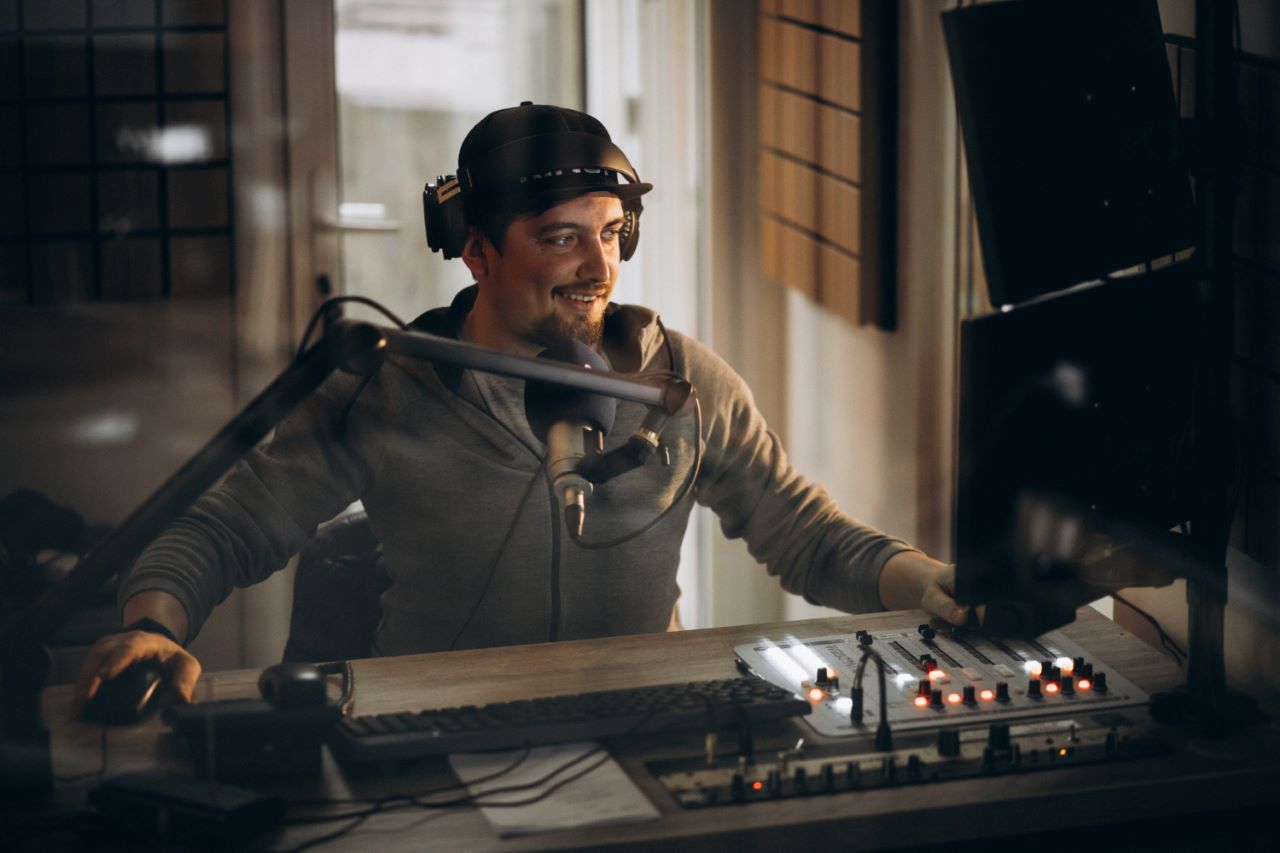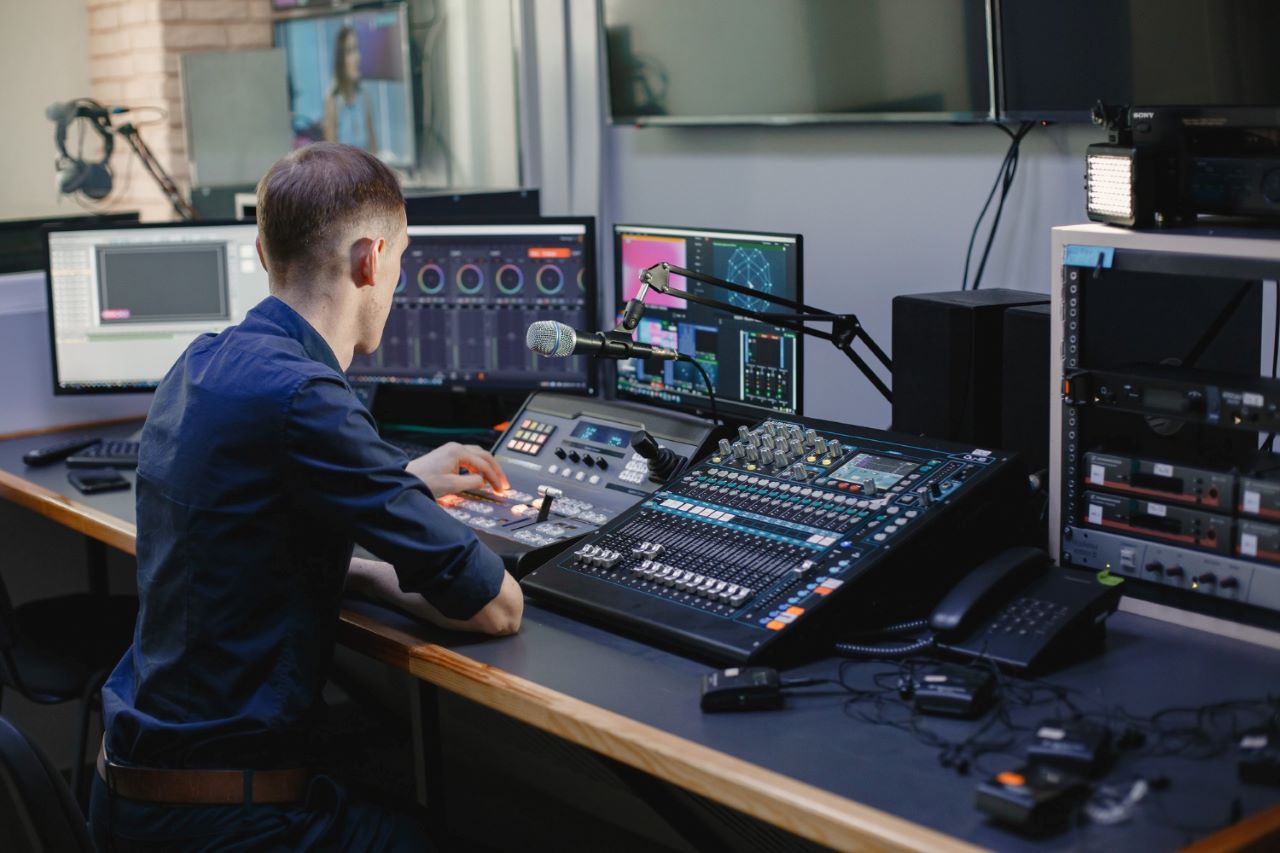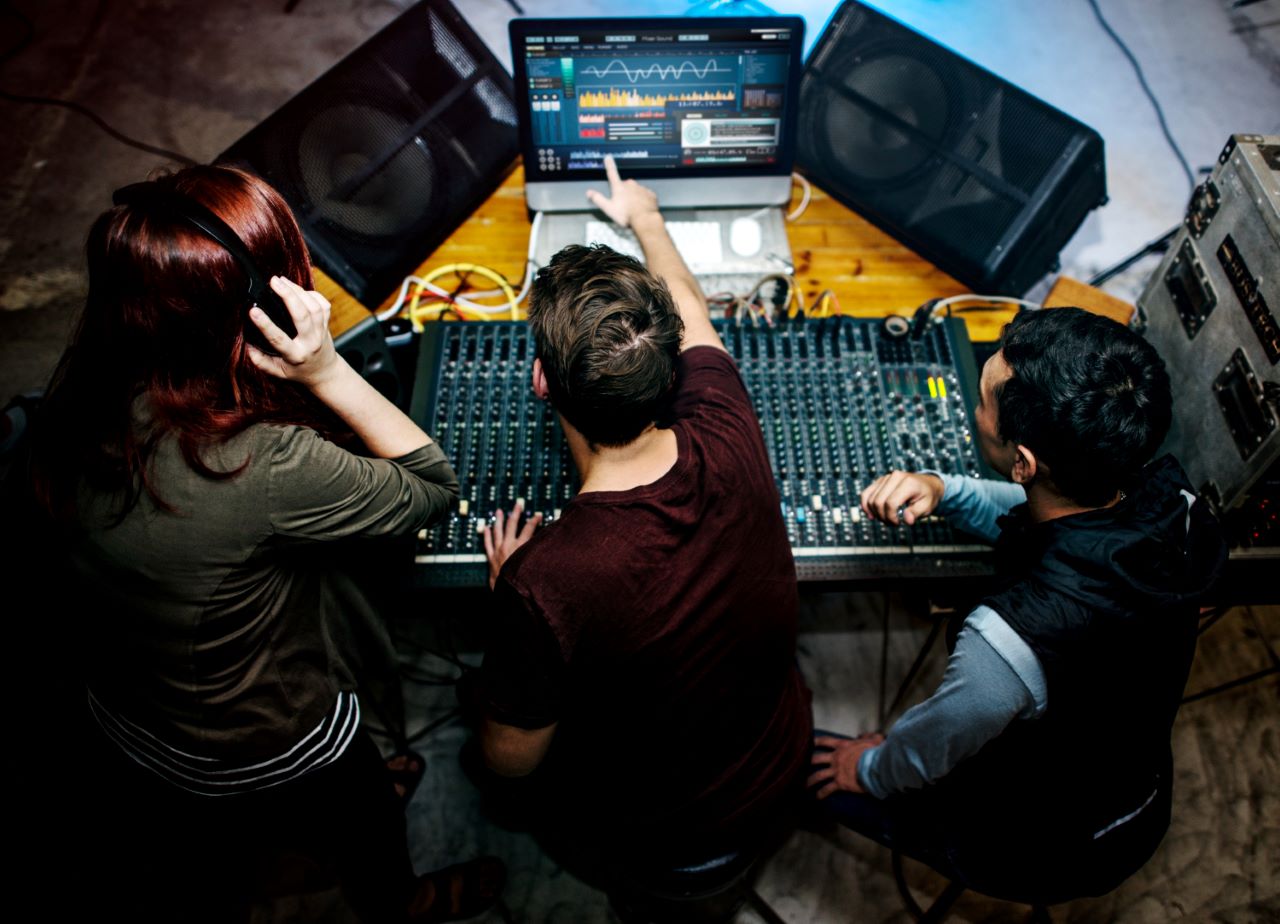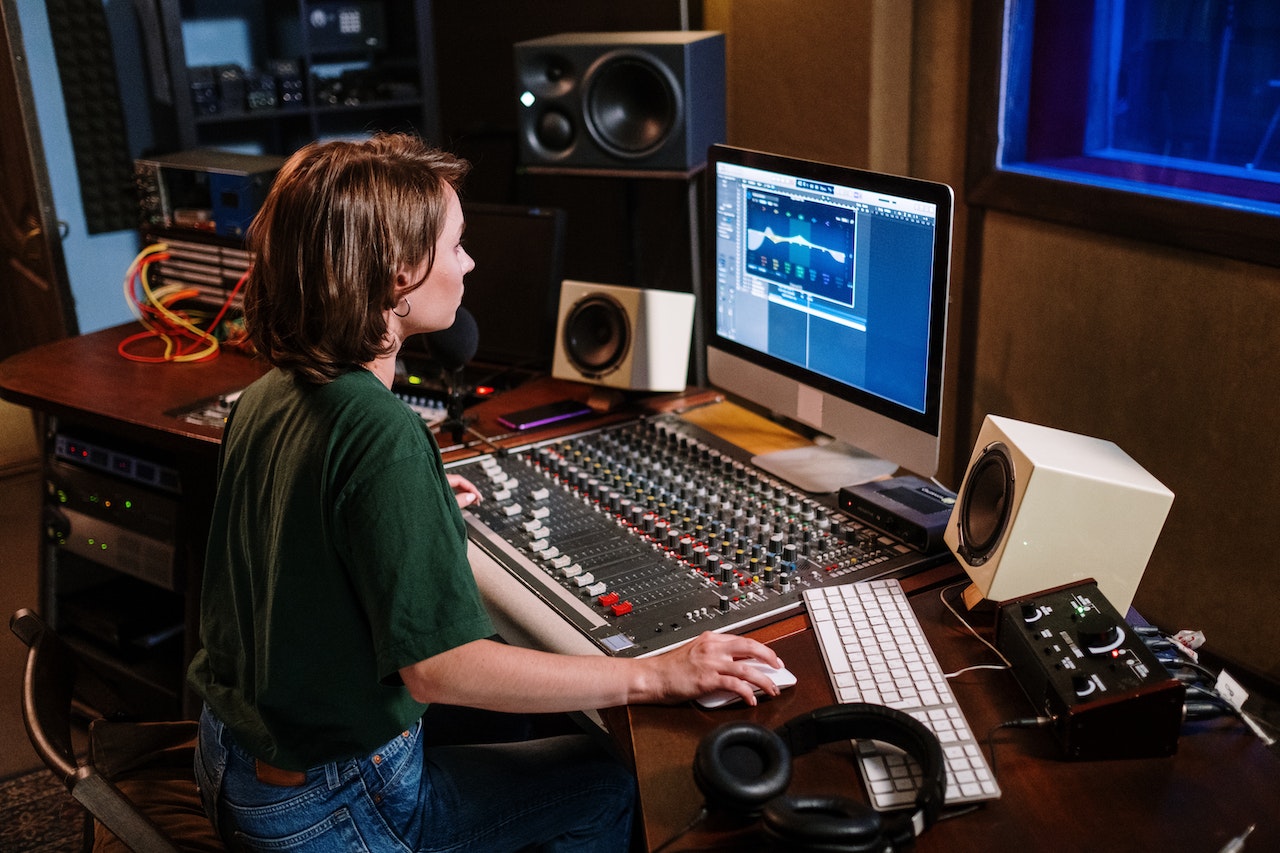What are three types of audio editing techniques?
Audio editing is an art that goes far beyond the surface of simply recording and playing back the sounds of podcasts. It’s a craft where precision meets creativity, shaping the auditory experience into something truly captivating. In this guide, we’ll dive into the heart of this art form by exploring three key techniques: Equalization (EQ), Compression, and Reverb & Spatial Effects.
Each technique brings its unique flavor to the audio mix. Equalization is about fine-tuning the balance of frequencies, ensuring that each note and word finds its perfect place in the overall sound. Compression is the subtle art of managing dynamics, giving consistency and punch to your audio. Lastly, Reverb and spatial Effects are the magic that adds depth and ambiance, transporting the listener to different sonic landscapes.
As you journey through this guide, you’ll gain insights into not just the technical aspects but also the creative possibilities each technique offers. From podcasts to music production, these tools are the secret ingredients that transform good audio into great audio. Let’s turn the knobs, adjust the levels, and uncover the secrets of professional audio editing on audio editing software.
Related: Best Podcast Editing Software
Contents
Technique One: Equalization (EQ)
Equalization in audio editing is like seasoning in cooking. Just as the right amount of salt can transform a dish, the right use of EQ can elevate any audio piece. But what exactly is EQ?
Equalization is the audio editing process of adjusting the balance between frequency components within an audio signal. In simpler terms, it’s about tweaking different aspects of sound — like bass, midrange, and treble — to achieve the desired audio quality. The purpose? To make sure every element in your audio clip plays well together, creating a harmonious and balanced sound.
Understanding EQ begins with recognizing frequencies. Human hearing ranges from low bass (around 20 Hz) to high treble (around 20,000 Hz). Each part of this range can be adjusted to enhance or reduce specific sound characteristics. For instance, boosting lower frequencies adds warmth, while enhancing higher frequencies brings clarity and sparkle.
Types Of Equalizers

Image by senivpetro on Freepik
There are different ‘flavors’ of equalizers, each suited for specific tasks.
- Graphic Equalizer: This type of EQ provides a visual representation of frequency bands. It’s user-friendly and great for making broad adjustments.
- Parametric Equalizer: The most versatile type, allowing you to adjust the frequency, bandwidth, and level of specific bands. It’s perfect for detailed sound sculpting.
- Shelving Equalizer: Ideal for adjusting low and high frequencies, this EQ ‘shelves’ or boosts/cuts frequencies above or below a set point.
Practical Applications Of EQ
Let’s delve into its practical applications.
- Enhancing Voice Clarity in Podcasts: EQ can make voices sound clear and present, ensuring your message cuts through without any muddiness.
- Balancing Instruments in Music Production: Each instrument in a mix demands its unique EQ settings. EQ helps in making sure they all sit perfectly in the mix without overshadowing each other.
- EQ for Different Genres: Jazz might need a warm, subtle EQ, while rock demands punchier, more aggressive settings. Understanding genre-specific EQ nuances is key of basic audio editing techniques.
Related: Equalizer Settings
Common EQ Mistakes And How To Avoid Them
Navigating the complexities of EQ in audio editing can be daunting, even for seasoned professionals. While EQ is a powerful tool for enhancing audio quality, it’s easy to fall into certain traps that can degrade your sound instead of improving it. Let’s break down these common mistakes and explore how to sidestep them for optimal audio results.
Over-EQing: The Trap of Too Much
It’s tempting to think that more EQ is better. However, over-EQing often leads to an unnatural, over-processed sound. This usually happens when too many frequencies are boosted or cut or when the adjustments are too drastic.
How to Avoid: Less is more. Start with subtle adjustments and only tweak as much as necessary. It’s crucial to maintain the natural character of the original sound. Trust your ears and aim for clarity and balance, not dramatic alterations.
EQing Without Context: Missing the Big Picture

Image by prostooleh on Freepik
EQing a track in isolation without considering how it fits into the overall mix can lead to a disjointed and unbalanced end product. Every element in a mix affects and is affected by others.
How to Avoid: Always EQ within the context of the full mix. Regularly switch between solo and full mix views to understand how your EQ adjustments impact the overall sound. This helps ensure every element harmoniously coexists.
Ignoring the Recording Environment
The acoustics of the recording space can heavily influence the sound. Neglecting this factor can result in EQ decisions that don’t address issues like room resonance or ambient noise.
How to Avoid: Be aware of your audio recording environment’s acoustics. Use EQ to mitigate any negative impacts from the space. Sometimes, the best EQ move is to re-record in a better environment.
Relying Solely on Presets: One Size Does Not Fit All
While presets can be a good starting point, relying on them exclusively can lead to a generic or unsuitable sound. Presets are not tailored to the specific nuances of your audio.
How to Avoid: Use presets as a starting point, but always customize them to fit your specific needs. Every audio track is unique, so your EQ approach should be as well.
Not Cutting Before Boosting: Balance Over Enhancement
Often, the instinct is to boost frequencies to enhance a sound. However, this can lead to a cluttered mix where certain elements overpower others.
How to Avoid: Prioritize cutting frequencies over boosting. Removing unwanted frequencies can often clear up a mix, making it easier to find the right balance. When boosting is necessary, do it sparingly.
By understanding and avoiding these common EQ mistakes, you’re on your way to mastering the art of equalization. Remember, good EQing requires a careful ear, a nuanced approach, and an understanding of how each adjustment contributes to the overall sonic landscape.
Technique Two: Compression
Compression in audio editing is a bit like a traffic controller for sound. It manages the dynamic range of your audio, ensuring that the loudest and quietest parts are brought closer together for a more consistent overall level. Let’s break down the basics and explore how it’s used.
Compression is all about control. It reduces the volume of loud sounds or amplifies quiet sounds by narrowing the dynamic range of an audio signal. This process helps in maintaining a steady volume level, making the audio easier to listen to and more polished.
These four parameters are the cornerstones of compression:
- Threshold: The level at which compression starts. Sounds louder than the threshold are compressed.
- Ratio: Determines how much compression is applied. A higher ratio means more compression.
- Attack: How quickly the compressor starts working after the sound exceeds the threshold.
- Release: How quickly the compressor stops affecting the sound once it falls below the threshold.
Types of Compressors
Each type of compressor has its unique characteristics and uses.
- Optical Compressor: Known for its smooth, musical compression. It’s great for vocals and instruments where subtlety is key.
- VCA Compressor: Versatile and precise, ideal for controlling fast transients in drums and percussive sounds.
- FET Compressor: Famous for its aggressive and colorful character, it is often used for adding punch and presence to audio tracks.
Compression in Action
Compression, a pivotal tool in audio engineering, works subtly yet significantly, impacting the final sound profoundly. Its applications vary widely, but let’s focus on three key areas: dynamics control in vocal tracks, achieving loudness without clipping, and its role in film and broadcast audio.
Dynamics Control in Vocal Tracks

Image by rawpixel.com on Freepik
In vocal recording, the natural variation in a singer’s volume can lead to inconsistencies. A softly sung verse might get lost, while a powerful chorus might overpower the mix. Compression manages these dynamics.
- Technique: By setting the correct threshold, the compressor engages only when the vocals exceed a certain volume level. A ratio of 3:1 to 6:1 is often ideal for vocals, striking a balance between consistency and maintaining natural dynamics.
- Attack and Release: A medium to slow attack (around 15-30 ms) preserves the natural onset of words, while a medium release (40-100 ms) ensures a smooth return to the uncompressed state. This setting avoids the ‘pumping’ effect, where compression becomes too noticeable.
- Gain Reduction: Monitoring gain reduction is crucial. Aim for a reduction of about 3-6 dB on louder passages. This ensures that the compression is effective without squashing the life out of the performance.
Achieving Loudness without Clipping
In mastering, compression plays a vital role in enhancing the perceived loudness of a track without pushing it into distortion territory.
- Technique: The goal here is to gently reduce the peaks of the track, allowing you to increase the overall level without clipping. A lower ratio (like 2:1) and a higher threshold ensure that only the loudest parts are compressed.
- Brickwall Limiting: Often, a limiter (an extreme form of compressor) is used post-compression to cap the audio at a specific level, preventing any possibility of clipping.
- Consistency: The key is to achieve a consistent level across the track, making it sound loud and clear on all playback systems, from headphones to large speakers.
Compression in Film and Broadcast Audio
For film and broadcast, compression ensures that all elements of the audio, from whispered dialogue to explosive sound effects, are clearly audible.
- Dialogue Compression: A moderate compression with a lower ratio and a threshold set to catch only the louder dialogues maintains clarity without affecting the emotional intensity.
- Background and Effects: Different settings are used for background sounds and effects. A more aggressive compression might be applied to sound effects to make them punchier, while ambient sounds might require only light compression.
- Final Mix: Compression in the final mix is about balance. It ensures that no single element overpowers others, maintaining an even and enjoyable listening experience.
In each of these applications, the art of compression lies in its subtlety and its ability to enhance without overtaking. It’s a dance of parameters, where every adjustment contributes to the final, polished sound. As you experiment with compression, remember that your ears are your best guide. Trust them, and you’ll unlock the true potential of this indispensable audio tool.
Technique Three: Reverb And Spatial Effects
Reverb isn’t just an effect; it’s the essence of space in sound. It’s what gives audio a sense of place, from the intimacy of a small room to the expanse of a grand cathedral. Reverb occurs when sound waves reflect off surfaces and reach the listener’s ears at different times. This creates a complex network of echoes that give a sense of space. In audio editing, reverb is used to simulate these natural reflections, adding depth and dimension to sound.
Different Types of Reverb Effects

Image by Freepik
There are several types of reverb, each with its unique character:
- Room Reverb: Simulates the acoustics of real rooms, from small spaces to large halls.
- Plate Reverb: Emulates the sound of vintage plate reverberators, known for their bright and dense reverb tails.
- Spring Reverb: Offers a distinctive ‘bouncy’ and metallic character, commonly used in guitar amplifiers.
- Digital/Algorithmic Reverb: Provides a wide range of customizable spaces, from realistic to surreal.
Using Reverb Creatively
Let’s take a look at how to use this technique creatively.
- Adding Space to Vocals and Instruments: Reverb can transform a dry, lifeless recording into a vibrant, atmospheric track. By carefully selecting the right type and amount of reverb, vocals, and instruments can be placed within a virtual space, giving them presence and depth.
- Reverb in Film Scoring and Sound Design: In the film, reverb is a storytelling tool. It sets the scene, whether it’s the echo of a cavernous dungeon or the subtle ambiance of a cozy room. Sound designers use reverb to match the audio with the visuals, creating a cohesive and immersive experience.
Beyond Reverb: Exploring Other Spatial Effects
Spatial effects extend beyond reverb, adding variety and creativity to the sound palette.
- Delay and Echo: Delay repeats the original audio after a set period, while echo creates a series of decaying repetitions. These effects can add rhythm, depth, and texture to a track.
- Chorus and Flanger Effects: The Chorus thickens the sound by duplicating the original signal and slightly altering its timing and pitch. Flanger creates a swirling effect by mixing the original signal with a delayed copy. Both effects add richness and movement to the sound.
Balancing Reverb: Do’s and Don’ts
Achieving the right balance with reverb is crucial. Too little, and the sound may feel flat; too much, and it can become muddy and indistinct.
- Do: Use reverb to complement the natural tone of the recording.
- Don’t: Overwhelm the track with reverb. It should enhance, not overpower.
- Do: Tailor the reverb to fit the mood and style of the piece.
- Don’t: Ignore the context. The reverb should make sense within the overall mix and the intended space.
Reverb and spatial effects are powerful tools in the audio editor’s arsenal. They shape the listener’s perception of space and distance, adding a new dimension to the audio experience. Mastering these effects is key to creating immersive and emotionally resonant soundscapes.
Conclusion
Our exploration of the three vital audio editing techniques – Equalization, Compression, and Reverb and Spatial Effects – uncovers the intricacies and artistry behind crafting exceptional sound. Like a painter with a palette, an audio editor uses these tools to bring depth, balance, and atmosphere to their creations.
Equalization is the fine brush that adjusts the tonal balance, ensuring every frequency has its place. Compression acts as a nuanced control, maintaining consistency and punch. Meanwhile, reverb and spatial effects are the final touches that add depth and context, placing the sound in a virtual environment.
Mastering these techniques to edit audio is a journey of continuous learning and experimentation. Each project offers a new opportunity to apply, adapt, and refine your skills. Whether you’re mixing a podcast, producing music, or designing sound for film, understanding and skillfully applying these advanced audio editing techniques will elevate your work from good to extraordinary.
Remember, the best audio editing is not just about technical prowess; it’s about storytelling. It’s how you use these tools to convey emotion, create atmosphere, and engage your audience. So, keep experimenting, keep learning, and let your creativity lead the way in the art of audio editing.

